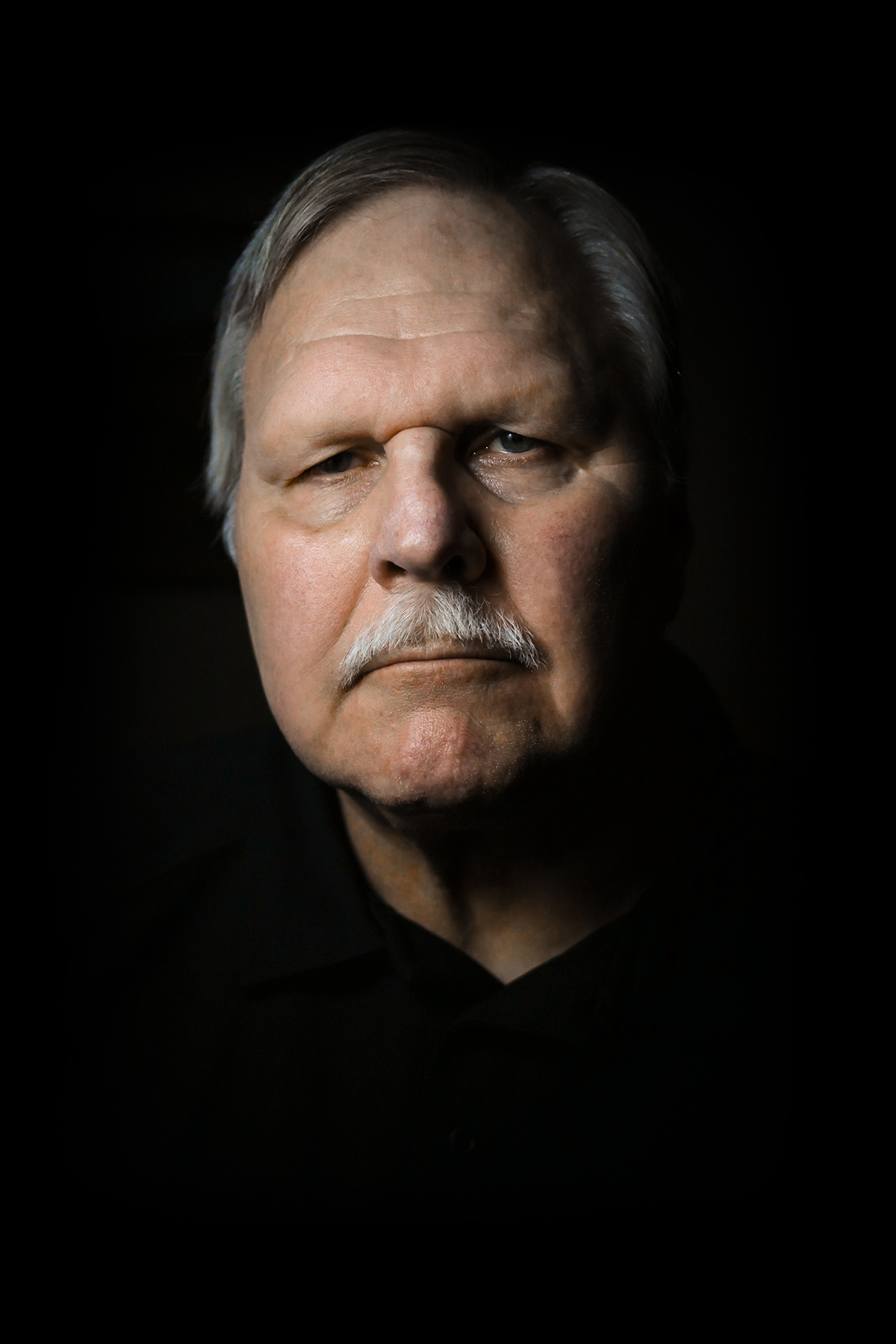
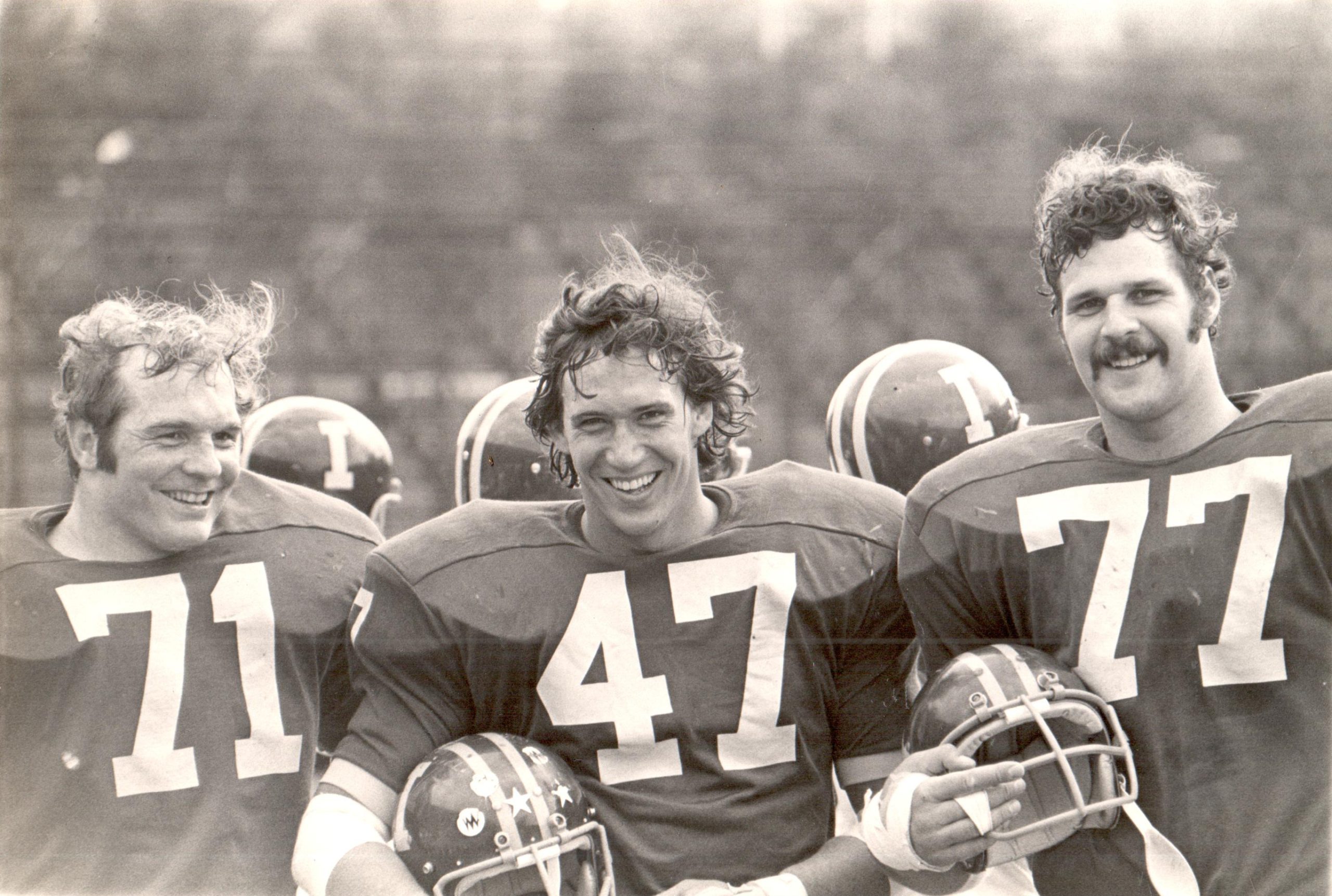

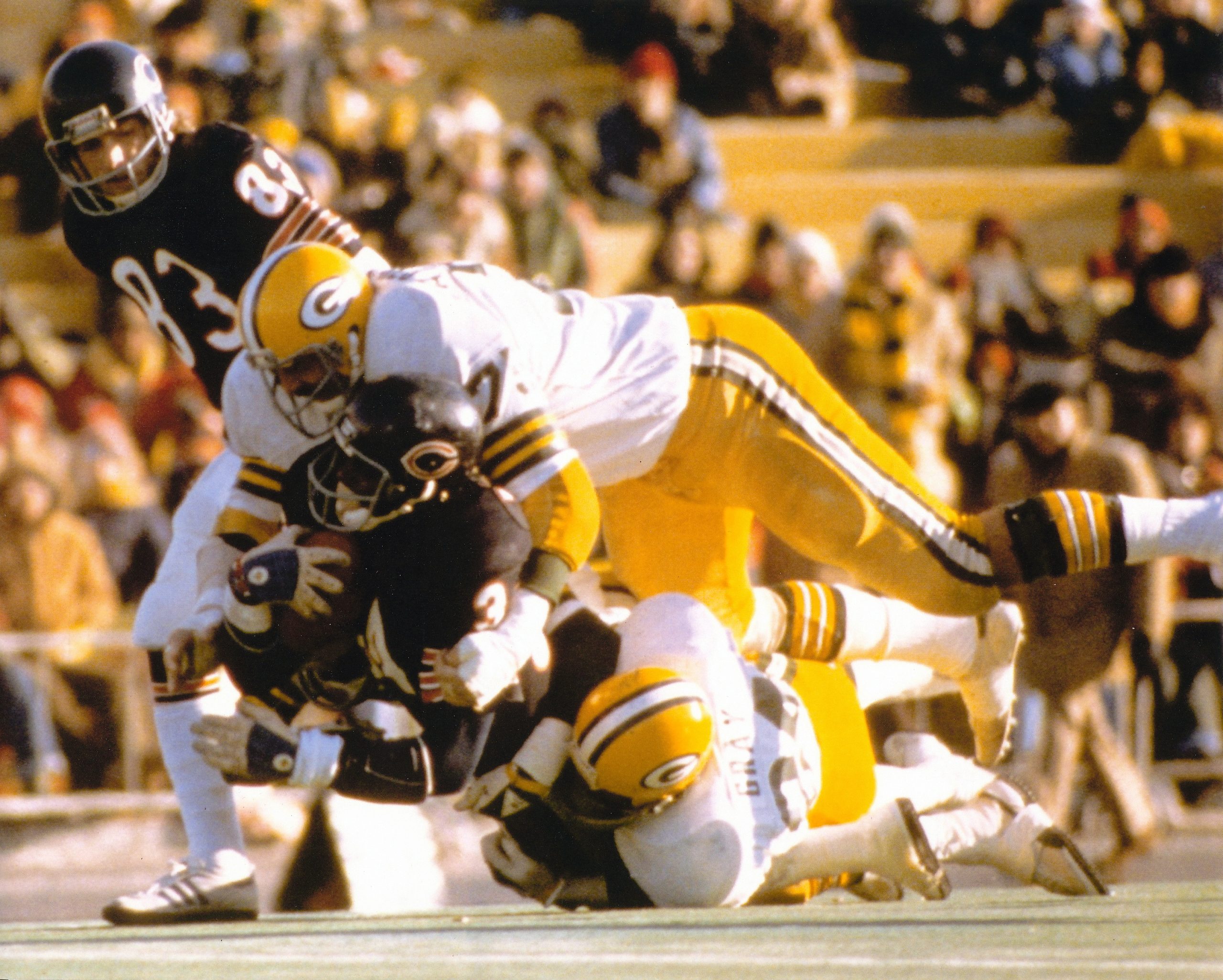
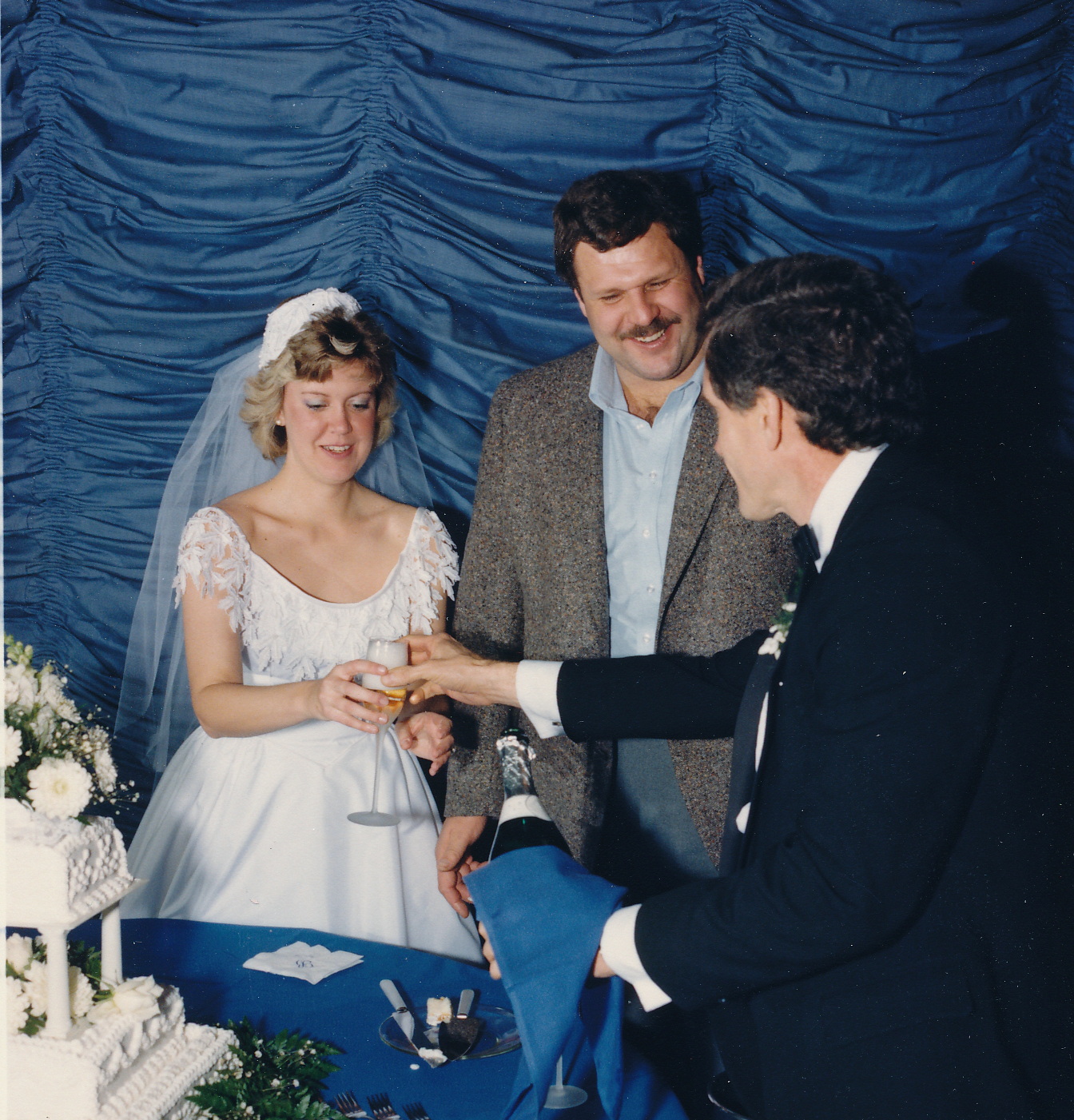
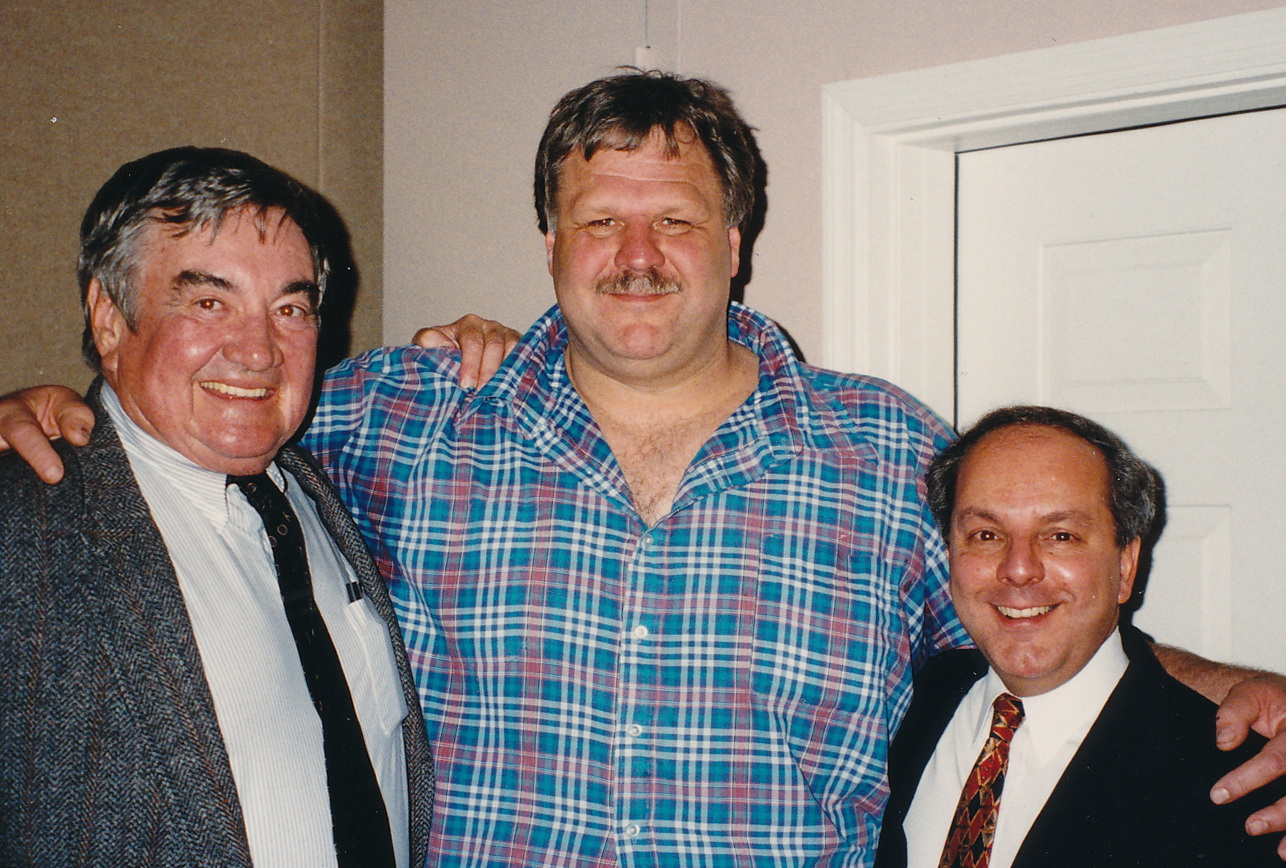


Carl J. Barzilauskas
March 19, 1951 – December 20, 2023
Carl Joseph Barzilauskas, 72, of Bloomington and Nashville (IN) died peacefully at the I.U. Health Bloomington Hospice House on Wednesday, December 20, 2023. Carl was born March 19, 1951, in Waterbury, Connecticut and was the son and only child of Carl Daniel Barzilauskas and Anne Helen Zukauskas Barzilauskas.
Carl is survived by his wife, Cathi D. (Harrah) Barzilauskas and their son, Robert F. (Bo) Barzilauskas of Bloomington. He is also survived by three cousins, Robin Wessman, Michael Zukauskas, and John Zukauskas.
Carl was raised in Waterbury, Connecticut where he attended Kennedy High School. Although he was the biggest kid in the building, he had not planned to play football until two members of the team reached out and recruited him to play. At Kennedy he was named All-City, All-Valley, and All-New England. He graduated in 1969.
After high school, Carl attended Cheshire Academy, a college preparatory school, for one year where he also played football. Carl had intended to become an electrician, but his Uncle Fritz, who had played for the New York Giants, convinced him he should attend college. Coach John Pont offered Carl a scholarship to play football for Indiana University. Carl moved to Bloomington and made Bloomington his home for the rest of his life.

Carl was a three-year starter for I.U. He played for both John Pont and Lee Corso. In his junior year he led the team in tackles. Carl had a high threshold of pain. He played his entire senior season on a broken foot. He wore a cast on the foot during practice, would remove the cast to play in the game, and put a new cast on his foot after the game for practice the next week. After playing at I.U. he was a Sporting News All-American and played in the East-West Shrine Game and the Senior Bowl All-Star Game.
In 1974 Carl was chosen by the New York Jets as the sixth pick in the first round of the NFL draft, the highest drafted I.U. player in the last 50 years. He was six feet six inches tall and weighed 275 pounds. When he was introduced to the New York press, the Jets’ general manager disclosed that his contract was the largest contract the team had given a first-round draft choice since the NFL and the AFL had agreed to merge.
Carl’s first coach with the Jets was Weeb Eubank, an Indiana native, who had recently coached the Jets to a historic victory over the Baltimore Colts in Superbowl III. Carl was quick for a big man and in his first year started every game at defensive tackle, where he was often double-teamed and triple-teamed and led the team in sacks. The New York Times described Carl as the biggest man to have ever played for the Jets up to that time.

After Carl’s first NFL season, Dick Voris, the Jets’ Defensive Coordinator and Line Coach said, “He is without question the finest defensive lineman I’ve ever coached.” In his first year Carl was named to the Pro-Football Writers, UPI, and Pro-Football Weekly All-Rookie Teams and was the 1974 NFL Rookie Defensive Lineman of the Year. Carl attributed much of his success during his first year in the NFL to his I.U. defensive line coach, Bob Hicks.
After his first season, in the summer of 1975 Carl was recruited to provide security for the Rolling Stones at a concert in Cleveland before 83,000 fans. He was assigned to the mosh pit in front of the stage and was pelted with bottles and other objects. Carl was pictured and quoted in the Cleveland Press that he would have rather been in a football game where there are only 11 guys on the other team out to get him.
Carl played with Hall of Fame quarterback Joe Namath, who had also been a first-round Jets draft pick. Carl spent some free time between games with Namath in New York City. He later described Namath as “a real quiet, nice guy” and his time off the field with “Broadway Joe” as a “learning experience.” Carl played four years with the Jets (1974-1977) before he was traded in 1978 to the Green Bay Packers where his coach was another Hall of Fame quarterback, Bart Starr. Carl played two years for the Packers (1978-1979).

While playing for the Packers Carl suffered a career-ending neck injury and lost the use of his arm. He was examined by Dr. Merrill A. Ritter, a distinguished Indianapolis orthopaedic surgeon, who concluded that Carl should not play and risked becoming permanently disabled if he played again. Carl had formed a close friendship with Ritter, his wife, and children when Ritter was the I.U. team physician, a friendship that lasted a lifetime with Ritter serving as Carl’s best man and at his side during his final illness.
Despite his injury, the Packers insisted that Carl play in the next game against the Atlanta Falcons. Carl entered the game with Atlanta for two plays, but his strength and agility were so impaired by his injury he knew his football career was over. He had left it all on the field.
Back in Green Bay, Carl packed his truck with his personal belongings and returned home to Bloomington. He eventually regained the use of his arm, but it was never the same.
Both during and after his football career, Carl was engaged in business. In his first year with the Jets Carl and Dr. Ritter opened a bar in downtown Bloomington known as “Barzo’s Blitz.” He then invested in a hardware store and started Barzo’s Fitness Center on North Walnut Street, which he later moved to a new facility he built at 100 North Curry Pike. His fitness center developed into the Orthopedic and Sports Physical Therapy Center with a second location at the Center for Hip and Knee Surgery in Mooresville established by Dr. Ritter. Carl operated his physical therapy centers for 22 years.

Following his numerous football injuries and his career-ending disability, Carl developed a special interest in sports medicine and the treatment and rehabilitation of sports and other injuries, and he became a champion of disability coverage for NFL players. When he played, there was no concussion protocol or “blue tent.” Players routinely played hurt, were permanently injured, and received no compensation for their disabilities. His interest in the rehabilitation of sports injuries expanded to include work-related injuries and post-surgery recoveries.
Carl also owned or partnered with others in real estate investments, including Realco, Small Town Properties, and First Care Associates. He was a partner and managed operating companies, including A-1 Printing, First Health Care, which operated two walk-in medical clinics, Colorado Steakhouses in Bloomington and Indianapolis, and Advanced Medical, Inc., an orthopaedic medical device supply company, and he served as a Director of Bloomfield State Bank. Always by his side was his steadfast, hands-on partner and devoted wife, Cathi, who as a registered nurse appreciated his passion for the therapeutic rehabilitation of sports and other injuries.
Carl served as President of the Indiana National Football League Players Association (INFLPA) and was a founding member and President of the Central Indiana Chapter of the National Football Foundation and College Hall of Fame. He initiated an annual scholar-athlete banquet at which local high school players are honored with postgraduate scholarships for their athletic, academic, and leadership accomplishments. In 1999 Carl incorporated the Indiana National Football League Players Association Foundation, a tax-exempt organization which supports charitable causes.
In 2000 Carl received the prestigious Joe Boland Award for service to youth from the Indiana Sports Writers and Sportscasters Association. In the same year he was inducted into the Indiana Football Hall of Fame. In 2005 the National Football Foundation recognized Carl as the Midwest Region recipient of the NFF Chapter Leadership Award at the Waldorf-Astoria in New York City. He was one of four individuals, one from each region, recognized for their “commitment, generosity, and leadership.”

Carl never pushed his son, Robert, known as “Bo,” to play football. Bo played several other sports until he decided on his own that he was ready for football. And like his father, he came to play, as both an offensive guard and defensive tackle for Bloomington High School South. Carl believed in what at the time was considered unconventional physical training. In the summer before Bo’s senior year, Carl conducted a boot camp at his home for Bo, Eli Stoddard, Brady Shields, Damian Claybrook and other BHSS players. He took Bo and his teammates to school with road work, digging holes, dragging an engine block with a chain, and manhandling railroad ties through open fields. When August had arrived they were ready for Mo Moriarity to coach them to an undefeated 14-0 season and the 1993 IHSAA Class 5-A championship. Carl’s boot camp had laid the foundation for the season. Bo was then recognized by coaches, the media, and the Indianapolis Star as “Mr. Football,” the state’s highest high school football honor.
Very few athletes can play football at the highest level of the sport. But Carl’s success never went to his head. While Carl was a force to be reckoned with on the football field, he never forgot that his NFL career opened many doors. He never forgot the coaches and other mentors who helped him develop from a big kid who had never played football to a high first-round NFL draft choice. Off the field he was a big man with a big heart, devout, considerate, humble, with a kind attitude toward others, generous with his time, and always ready with a helping hand or an encouraging word. He was dedicated to giving back.

Carl was thoroughly devoted to his wife and son. He and Cathi were married at St. John Catholic Church when it was located on West Third Street. When the church was demolished, he recovered a brick from the demolition to commemorate their marriage.
He liked to work with his hands, was skilled with hand and power tools, and knew his way around a construction site. On one project he used his enormous strength to catch and hold up roof trusses which had collapsed and pancaked to save a co-worker from serious injury. On another job he lifted off a rooftop air conditioning unit after it had fallen from a crane upon a man standing below. With assistance from specialized trades when needed, Carl built most of his home and the business buildings he owned.
Carl’s family and friends would like to thank the providers at I.U. Health Bloomington Hospital and Hospice House for their kindness and care of Carl as he approached the end of his life.
Visitation for Carl will take place on Thursday, January 4, 2024, from 4:00 p.m. to 8:00 p.m. at The Funeral Chapel, 3000 East Third Street, Bloomington, Indiana 47401. A Mass of Christian Burial will be held on Friday, January 5, 2024, at 11:00 a.m. at Saint Agnes Catholic Church, 1008 McClary Road, Nashville, Indiana 47448. There will be a grave side service at Greenlawn Cemetery near Nashville.
In lieu of flowers, memorial contributions for postgraduate scholarships awarded to high school football scholar athletes may be made to the National Football Foundation, Central Indiana Chapter, 4922 West 16th Street, Indianapolis Indiana 46224.
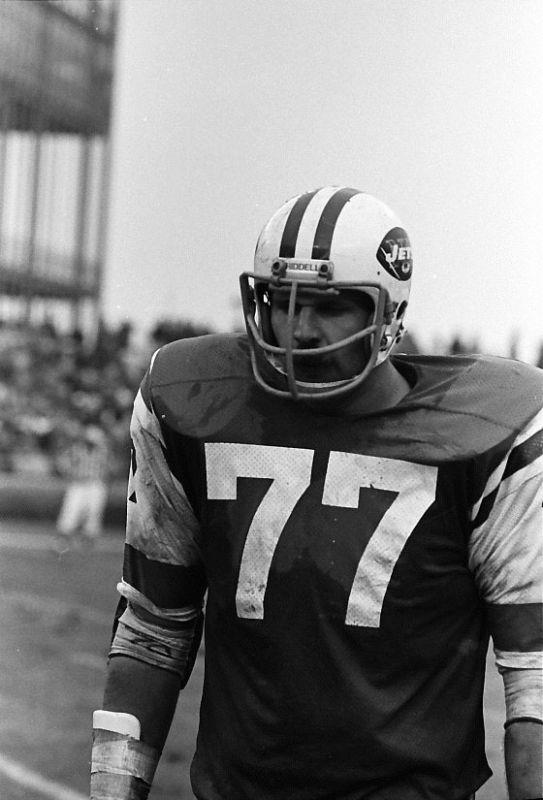
Carl Joseph Barzilauskas, 72, of Bloomington and Nashville (IN) died peacefully at the I.U. Health Bloomington Hospice House on Wednesday, December 20, 2023. Carl was born March 19, 1951, in Waterbury, Connecticut and was the son and only child of Carl Daniel Barzilauskas and Anne Helen Zukauskas Barzilauskas.
Carl is survived by his wife, Cathi D. (Harrah) Barzilauskas and their son, Robert F. (Bo) Barzilauskas of Bloomington. He is also survived by three cousins, Robin Wessman, Michael Zukauskas, and John Zukauskas.
Carl was raised in Waterbury, Connecticut where he attended Kennedy High School. Although he was the biggest kid in the building, he had not planned to play football until two members of the team reached out and recruited him to play. At Kennedy he was named All-City, All-Valley, and All-New England. He graduated in 1969.
After high school, Carl attended Cheshire Academy, a college preparatory school, for one year where he also played football. Carl had intended to become an electrician, but his Uncle Fritz, who had played for the New York Giants, convinced him he should attend college. Coach John Pont offered Carl a scholarship to play football for Indiana University. Carl moved to Bloomington and made Bloomington his home for the rest of his life.
Carl was a three-year starter for I.U. He played for both John Pont and Lee Corso. In his junior year he led the team in tackles. Carl had a high threshold of pain. He played his entire senior season on a broken foot. He wore a cast on the foot during practice, would remove the cast to play in the game, and put a new cast on his foot after the game for practice the next week. After playing at I.U. he was a Sporting News All-American and played in the East-West Shrine Game and the Senior Bowl All-Star Game.
In 1974 Carl was chosen by the New York Jets as the sixth pick in the first round of the NFL draft, the highest drafted I.U. player in the last 50 years. He was six feet six inches tall and weighed 275 pounds. When he was introduced to the New York press, the Jets’ general manager disclosed that his contract was the largest contract the team had given a first-round draft choice since the NFL and the AFL had agreed to merge.
Carl’s first coach with the Jets was Weeb Eubank, an Indiana native, who had recently coached the Jets to a historic victory over the Baltimore Colts in Superbowl III. Carl was quick for a big man and in his first year started every game at defensive tackle, where he was often double-teamed and triple-teamed and led the team in sacks. The New York Times described Carl as the biggest man to have ever played for the Jets up to that time.
After Carl’s first NFL season, Dick Voris, the Jets’ Defensive Coordinator and Line Coach said, “He is without question the finest defensive lineman I’ve ever coached.” In his first year Carl was named to the Pro-Football Writers, UPI, and Pro-Football Weekly All-Rookie Teams and was the 1974 NFL Rookie Defensive Lineman of the Year. Carl attributed much of his success during his first year in the NFL to his I.U. defensive line coach, Bob Hicks.
After his first season, in the summer of 1975 Carl was recruited to provide security for the Rolling Stones at a concert in Cleveland before 83,000 fans. He was assigned to the mosh pit in front of the stage and was pelted with bottles and other objects. Carl was pictured and quoted in the Cleveland Press that he would have rather been in a football game where there are only 11 guys on the other team out to get him.
Carl played with Hall of Fame quarterback Joe Namath, who had also been a first-round Jets draft pick. Carl spent some free time between games with Namath in New York City. He later described Namath as “a real quiet, nice guy” and his time off the field with “Broadway Joe” as a “learning experience.” Carl played four years with the Jets (1974-1977) before he was traded in 1978 to the Green Bay Packers where his coach was another Hall of Fame quarterback, Bart Starr. Carl played two years for the Packers (1978-1979).
While playing for the Packers Carl suffered a career-ending neck injury and lost the use of his arm. He was examined by Dr. Merrill A. Ritter, a distinguished Indianapolis orthopaedic surgeon, who concluded that Carl should not play and risked becoming permanently disabled if he played again. Carl had formed a close friendship with Ritter, his wife, and children when Ritter was the I.U. team physician, a friendship that lasted a lifetime with Ritter serving as Carl’s best man and at his side during his final illness.
Despite his injury, the Packers insisted that Carl play in the next game against the Atlanta Falcons. Carl entered the game with Atlanta for two plays, but his strength and agility were so impaired by his injury he knew his football career was over. He had left it all on the field.
Back in Green Bay, Carl packed his truck with his personal belongings and returned home to Bloomington. He eventually regained the use of his arm, but it was never the same.
Both during and after his football career, Carl was engaged in business. In his first year with the Jets Carl and Dr. Ritter opened a bar in downtown Bloomington known as “Barzo’s Blitz.” He then invested in a hardware store and started Barzo’s Fitness Center on North Walnut Street, which he later moved to a new facility he built at 100 North Curry Pike. His fitness center developed into the Orthopedic and Sports Physical Therapy Center with a second location at the Center for Hip and Knee Surgery in Mooresville established by Dr. Ritter. Carl operated his physical therapy centers for 22 years.
Following his numerous football injuries and his career-ending disability, Carl developed a special interest in sports medicine and the treatment and rehabilitation of sports and other injuries, and he became a champion of disability coverage for NFL players. When he played, there was no concussion protocol or “blue tent.” Players routinely played hurt, were permanently injured, and received no compensation for their disabilities. His interest in the rehabilitation of sports injuries expanded to include work-related injuries and post-surgery recoveries.
Carl also owned or partnered with others in real estate investments, including Realco, Small Town Properties, and First Care Associates. He was a partner and managed operating companies, including A-1 Printing, First Health Care, which operated two walk-in medical clinics, Colorado Steakhouses in Bloomington and Indianapolis, and Advanced Medical, Inc., an orthopaedic medical device supply company, and he served as a Director of Bloomfield State Bank. Always by his side was his steadfast, hands-on partner and devoted wife, Cathi, who as a registered nurse appreciated his passion for the therapeutic rehabilitation of sports and other injuries.
Carl served as President of the Indiana National Football League Players Association (INFLPA) and was a founding member and President of the Central Indiana Chapter of the National Football Foundation and College Hall of Fame. He initiated an annual scholar-athlete banquet at which local high school players are honored with postgraduate scholarships for their athletic, academic, and leadership accomplishments. In 1999 Carl incorporated the Indiana National Football League Players Association Foundation, a tax-exempt organization which supports charitable causes.
In 2000 Carl received the prestigious Joe Boland Award for service to youth from the Indiana Sports Writers and Sportscasters Association. In the same year he was inducted into the Indiana Football Hall of Fame. In 2005 the National Football Foundation recognized Carl as the Midwest Region recipient of the NFF Chapter Leadership Award at the Waldorf-Astoria in New York City. He was one of four individuals, one from each region, recognized for their “commitment, generosity, and leadership.”
Carl never pushed his son, Robert, known as “Bo,” to play football. Bo played several other sports until he decided on his own that he was ready for football. And like his father, he came to play, as both an offensive guard and defensive tackle for Bloomington High School South. Carl believed in what at the time was considered unconventional physical training. In the summer before Bo’s senior year, Carl conducted a boot camp at his home for Bo, Eli Stoddard, Brady Shields, Damian Claybrook and other BHSS players. He took Bo and his teammates to school with road work, digging holes, dragging an engine block with a chain, and manhandling railroad ties through open fields. When August had arrived they were ready for Mo Moriarity to coach them to an undefeated 14-0 season and the 1993 IHSAA Class 5-A championship. Carl’s boot camp had laid the foundation for the season. Bo was then recognized by coaches, the media, and the Indianapolis Star as “Mr. Football,” the state’s highest high school football honor.
Very few athletes can play football at the highest level of the sport. But Carl’s success never went to his head. While Carl was a force to be reckoned with on the football field, he never forgot that his NFL career opened many doors. He never forgot the coaches and other mentors who helped him develop from a big kid who had never played football to a high first-round NFL draft choice. Off the field he was a big man with a big heart, devout, considerate, humble, with a kind attitude toward others, generous with his time, and always ready with a helping hand or an encouraging word. He was dedicated to giving back.
Carl was thoroughly devoted to his wife and son. He and Cathi were married at St. John Catholic Church when it was located on West Third Street. When the church was demolished, he recovered a brick from the demolition to commemorate their marriage.
He liked to work with his hands, was skilled with hand and power tools, and knew his way around a construction site. On one project he used his enormous strength to catch and hold up roof trusses which had collapsed and pancaked to save a co-worker from serious injury. On another job he lifted off a rooftop air conditioning unit after it had fallen from a crane upon a man standing below. With assistance from specialized trades when needed, Carl built most of his home and the business buildings he owned.
Carl’s family and friends would like to thank the providers at I.U. Health Bloomington Hospital and Hospice House for their kindness and care of Carl as he approached the end of his life.
Visitation for Carl will take place on Thursday, January 4, 2024, from 4:00 p.m. to 8:00 p.m. at The Funeral Chapel, 3000 East Third Street, Bloomington, Indiana 47401. A Mass of Christian Burial will be held on Friday, January 5, 2024, at 11:00 a.m. at Saint Agnes Catholic Church, 1008 McClary Road, Nashville, Indiana 47448. There will be a grave side service at Greenlawn Cemetery near Nashville.
In lieu of flowers, memorial contributions for postgraduate scholarships awarded to high school football scholar athletes may be made to the National Football Foundation, Central Indiana Chapter, 4922 West 16th Street, Indianapolis Indiana 46224.